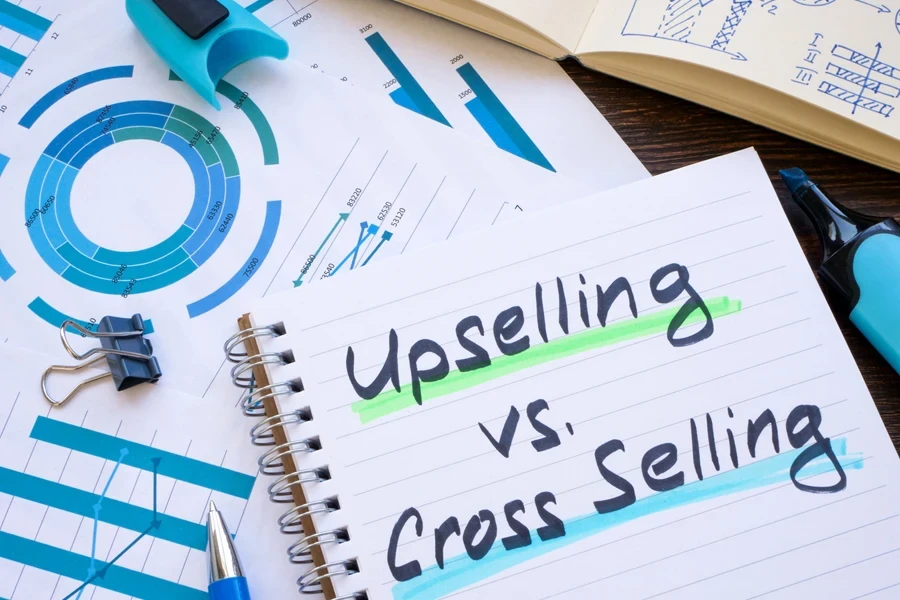Imagine having a secret weapon that could transform every customer interaction into a success story. This is what a well-designed customer success program promises. With customers relying on your products to meet their needs, the stakes are high—but so are the rewards.
Investing in a customer success program is not just a strategy to help your clients; it ensures your business thrives alongside them. In fact, according to Forrester research, a well-crafted program can yield an impressive 91% ROI over a three-year period.
That said, what is a customer success program, and how can you build one? In this guide, we will go through everything you need to know about building a customer success program, its importance, and the steps you should take to create the perfect program to help your customers grow your business. Keep reading to learn more.
Table of Contents
What is customer success?
The importance of a customer success program
How to create a customer success program
Conclusion
What is customer success?
Customer success occurs when customers love the solution you offer to their problems to the extent that they want to keep buying your products and services in the long term. It involves building long-lasting relationships and understanding customers’ goals.
For customer success to be achieved, customer success managers and their sales teams need to collaborate with customers throughout their journey at every touchpoint with your business.
The importance of a customer success program
Investing in customer success is vital for your brand. When your business enables your customers to achieve their goals, their chances of continuing their relationship with you are enhanced. Let’s look at some of the benefits of adopting a customer success strategy.
1. Boost revenue

One key reason companies focus on customer success is growing their revenue. According to a study conducted by HubSpot, 70% of organizations with growing revenue find customer success as “very important.” 49% of companies with stagnating revenues considered customer success “very important.”
The same report also found that 55% of expanding companies said leveraging a customer success strategy was “very important,” with 29% of non-growing companies saying that the programs were “very important” for their business. Therefore, this study shows that companies that invest in customer success programs tend to have a positive return on their investment.
2. Decrease acquisition cost
When customers achieve their goals thanks to your offerings, they’ll link their success to your company. This leads to reduced customer acquisition costs because your customer retention rate improves. Instead of searching for a competitor’s product or service, customers will return to your business because they feel confident that your solution solves their problem.
To add on that, satisfied customers are more likely to share stories of success with your product and recommend it to others. They become your brand advocates who market your business to other potential customers. This leads to a surge in your customer referral rate, reducing the amount of time and resources you dedicate to attract and capture new customers.
3. Upselling and cross-selling opportunities

Customer success programs present opportunities that allow for your business to engage with your audience. Mainstay research found out that companies that utilized customer success programs recorded twice as many interactions than those without.
Thus, your teams become able to upsell and cross-sell to engaged customers. Customer success managers can prepare for challenges that customers will likely encounter then communicate with them about how upgrading their current package will bring a halt to an issue they are facing.
4. Reduce customer churn
A customer success program helps reduce customer churn and increase customer retention. Customer churn happens when a user buys from your website and for some reason never returns.
The same study by Mainstay saw companies that invested in a customer success program reduce their churn rates by 2-3%. The companies were able to set up playbooks and automate alerts that would tell them when a customer was likely to churn. By doing this, they were able to identify opportunities to nurture unsatisfied customers who would likely choose a competitor over them.
How to create a customer success program
Here is a guide on how to create an effective customer success plan to attain your business goals.
1. Get to know the customer’s end goal
First things first, you need to determine why customers are buying your product. For instance, one wouldn’t shop for a lawn mower just because they needed one. On the flip side, if they needed one for their lawn care business, they would most likely buy one.
This means that every customer has an end goal in mind when making a purchase; hence, identifying where your business’s product fits in that equation is important. Then, you can use buyer personas to separate customers based on products that fulfill their needs.
Start by finding the customers that are the most appropriate for your customer success program. If you want to increase the chances of customer success, you will want to make sure that you are targeting high-value audiences that are best fit for your business.
Conduct a qualitative data analysis using strategies such as conducting a net promoter score survey tracking social media mentions or product usage reports. Doing this will help you know their end goal and enable you to formulate solutions that uniquely address their concerns.
2. Create a team

Once you know who your ideal customer is and the goals they want to achieve, it’s time to put together a customer success team. Without a team, your customers will find products and services you offer as suggestions rather than steps to attain success.
Building a team showcases that your business is dedicated to helping your customers reach their goals. With time, trust builds because of the good relationship they have with your team, which boosts their chances of making repeat purchases.
As you set up a customer success (CS) team, you could hire an external customer success manager. However, finding talent within your team that possesses proper communication skills would suffice.
A good place where you can find the right people to build a customer success team includes your customer support or sales department as these employees have adequate knowledge about your products as well as several years of experience handling customer queries.
3. Get the right tools to help customers achieve desired outcomes
Before executing your strategy, you need to know whether you should invest in an automated or manual customer success plan. Manual programs require you to create the processes and execute them yourself, that is, if you have limited resources for automated solutions.
On the other hand, automated customer success programs can manage your efforts and make measuring the success easier. They have features such as automated alerts, customer status reports which help you keep track of each customer’s progress. Some examples of top customer success software you can use include Totango, HubSpot, Gainsight, and Amity.
4. Develop a roadmap for success

The next step in creating a CS strategy is to outline the customer journey and identify opportunities where your business can make an impact. Study your customer journey map and look for challenges likely to be faced at each stage, then know what actions to take to ensure customer’s success when they encounter roadblocks.
If you have hiccups coming up with ideas, ask yourself these questions:
- What is the end goal at each stage of the customer journey?
- What will the customer gain at each stage?
- At what stage is your product failing to meet their expectations?
- At what stage are your competitors likely to influence your customers?
- Which method will you use to track customers who are unhappy with their progress in the customer journey?
You will also want to consider how your team members will be in touch with the customers as well as the timing and communication channel. This will help you ensure that your efforts come out as helpful as possible to help the consumer achieve their goal.
5. Track KPIs
Establishing your metrics is important to help you track the performance of your strategy. Remember that customer success is a mutual relationship between your business and the customer; therefore, ensure that your metrics measure both the customer’s and your company’s success.
The key performance indicators to measure include customer lifetime value and customer acquisition cost to track their impact on your company, as well as churn rate, NPS, and customer effort score for the consumer’s side. Combining both helps you get a clear image of whether both parties are gaining from your team’s efforts.
6. Focus on one thing at a time

At this point your CS program is already up and running. However, a challenge can emerge on what to focus on to ensure both parties benefit from each other.
Making multiple changes at once can overwhelm your customer, even if it’s for their good. Furthermore, it can be difficult to measure the impact of every change you make. The right approach is making one change at a time so that you can have a vivid image of things that are working and where fine-tuning is required.
Conclusion
Having a customer success strategy is vital for your brand, especially in today’s competitive business landscape. It can help boost your revenue, increase customer loyalty, and minimize your customer acquisition costs. With the tips in this guide, creating a working CS strategy should not be a daunting task. Last but not least, you can find more insightful business tips like these from the Alibaba.com Reads blog.




